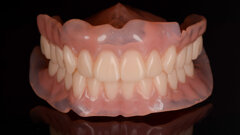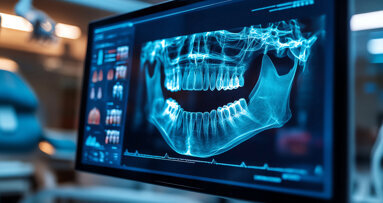TAMPERE, Finland: The long-standing relationship between oral bacteria and systemic disease has taken on new significance with recent advances in molecular medicine. As part of this trend, a groundbreaking study by Finnish researchers has found compelling evidence that bacteria commonly found in the mouth could play a causal role in heart attack. The research suggests that myocardial infarction may, in some cases, be triggered by infectious processes originating in oral biofilms.
In recent years, the link between oral health and general health has become an increasingly important focus of discussion in both academic and clinical contexts. Among these connections, the relationship between oral health and cardiovascular disease has been especially extensively studied. A study from 2024, for example, identified periodontal disease as a “non-traditional risk factor in the development of and progression of cardiovascular diseases”.
Building upon these scientific foundations, the findings of the new Finnish study indicate that the connection may be direct. The researchers discovered viridans streptococci—a group of bacteria typically associated with dental biofilm and infective endocarditis—within atherosclerotic plaques obtained from sudden cardiac death victims and vascular surgery patients.
The study analysed coronary plaques from 121 autopsy cases and endarterectomy samples from 96 surgical patients. Using advanced molecular techniques, the team found viridans streptococcal DNA in approximately 42% of both sample sets. These bacterial biofilms were embedded deep within the arterial deposits and evaded the body’s immune system, allowing chronic, low-grade infection to persist unnoticed.
Further investigation revealed that portions of the bacterial biofilm had detached and migrated towards the surface layer of the plaque—the fibrous cap that separates the deposit from the bloodstream. This cap is where ruptures often lead to fatal myocardial infarction. The dispersed bacteria were shown to trigger both innate and adaptive immune responses and thereby fuel inflammation.
The findings challenge long-held views of myocardial infarction as purely a metabolic disease, suggesting instead that chronic bacterial infection may contribute to the development of heart attack in some cases. Speaking in a Tampere University press release, lead author Prof. Pekka Karhunen, of the university’s Faculty of Medicine and Health Technology, explained the significance of the research: “Bacterial involvement in coronary artery disease has long been suspected, but direct and convincing evidence has been lacking. Our study demonstrated the presence of genetic material—DNA—from several oral bacteria inside atherosclerotic plaques.”
For dentistry, the implications are profound. As viridans streptococci are integral to dental biofilm formation, the study underscores the importance of maintaining rigorous oral hygiene and managing chronic dental infections—not only for oral health but potentially for reducing cardiovascular risk.
The study, titled “Viridans streptococcal biofilm evades immune detection and contributes to inflammation and rupture of atherosclerotic plaques” , was published online on 19 August 2025 in the Journal of the American Heart Association.
Topics:
Tags:
TOKYO, Japan: Researchers from Tokyo Medical and Dental University have added to the literature linking periodontal disease and cardiovascular disease by ...
STONY BROOK, N.Y., US: The applicability and efficacy of artificial intelligence (AI) within dentistry appears to be limitless. With each passing day, ...
LONDON, England: Balanced nutrition is known to lower the risk of major non-communicable diseases, including cardiovascular disease, neurodegenerative ...
Dr Dympna Kavanagh is chief dental officer in Ireland’s Department of Health and chair of the Platform for Better Oral Health in Europe. A specialist in ...
NEW YORK, US: Oral diseases and depression are both projected to rise in prevalence over the coming decades, and recent findings suggest the two may be ...
Live webinar
Fri. 12 December 2025
1:00 pm EST (New York)
Live webinar
Fri. 12 December 2025
2:00 pm EST (New York)
Deepak Simkhada RDHT, BSc, MSc, PGCE, FSET, Cat Edney
Live webinar
Mon. 15 December 2025
5:30 am EST (New York)
Live webinar
Mon. 15 December 2025
2:00 pm EST (New York)
Dr. Andrew Ip, Przemek Seweryniak
Live webinar
Mon. 15 December 2025
5:00 pm EST (New York)
Live webinar
Wed. 17 December 2025
6:00 am EST (New York)
Dr. Piet Haers Oral and Maxillofacial Surgeon



 Austria / Österreich
Austria / Österreich
 Bosnia and Herzegovina / Босна и Херцеговина
Bosnia and Herzegovina / Босна и Херцеговина
 Bulgaria / България
Bulgaria / България
 Croatia / Hrvatska
Croatia / Hrvatska
 Czech Republic & Slovakia / Česká republika & Slovensko
Czech Republic & Slovakia / Česká republika & Slovensko
 France / France
France / France
 Germany / Deutschland
Germany / Deutschland
 Greece / ΕΛΛΑΔΑ
Greece / ΕΛΛΑΔΑ
 Hungary / Hungary
Hungary / Hungary
 Italy / Italia
Italy / Italia
 Netherlands / Nederland
Netherlands / Nederland
 Nordic / Nordic
Nordic / Nordic
 Poland / Polska
Poland / Polska
 Portugal / Portugal
Portugal / Portugal
 Romania & Moldova / România & Moldova
Romania & Moldova / România & Moldova
 Slovenia / Slovenija
Slovenia / Slovenija
 Serbia & Montenegro / Србија и Црна Гора
Serbia & Montenegro / Србија и Црна Гора
 Spain / España
Spain / España
 Switzerland / Schweiz
Switzerland / Schweiz
 Turkey / Türkiye
Turkey / Türkiye
 UK & Ireland / UK & Ireland
UK & Ireland / UK & Ireland
 Brazil / Brasil
Brazil / Brasil
 Canada / Canada
Canada / Canada
 Latin America / Latinoamérica
Latin America / Latinoamérica
 USA / USA
USA / USA
 China / 中国
China / 中国
 India / भारत गणराज्य
India / भारत गणराज्य
 Pakistan / Pākistān
Pakistan / Pākistān
 Vietnam / Việt Nam
Vietnam / Việt Nam
 ASEAN / ASEAN
ASEAN / ASEAN
 Israel / מְדִינַת יִשְׂרָאֵל
Israel / מְדִינַת יִשְׂרָאֵל
 Algeria, Morocco & Tunisia / الجزائر والمغرب وتونس
Algeria, Morocco & Tunisia / الجزائر والمغرب وتونس
 Middle East / Middle East
Middle East / Middle East








































To post a reply please login or register